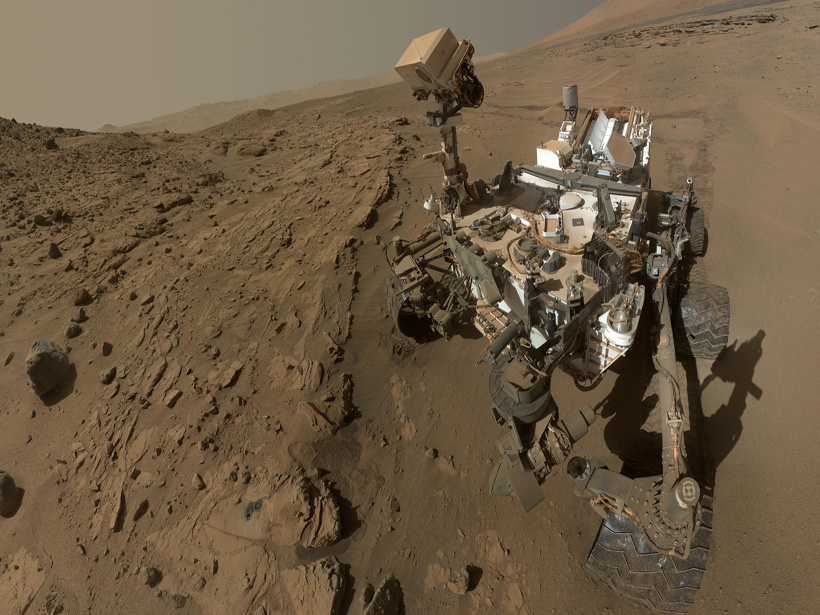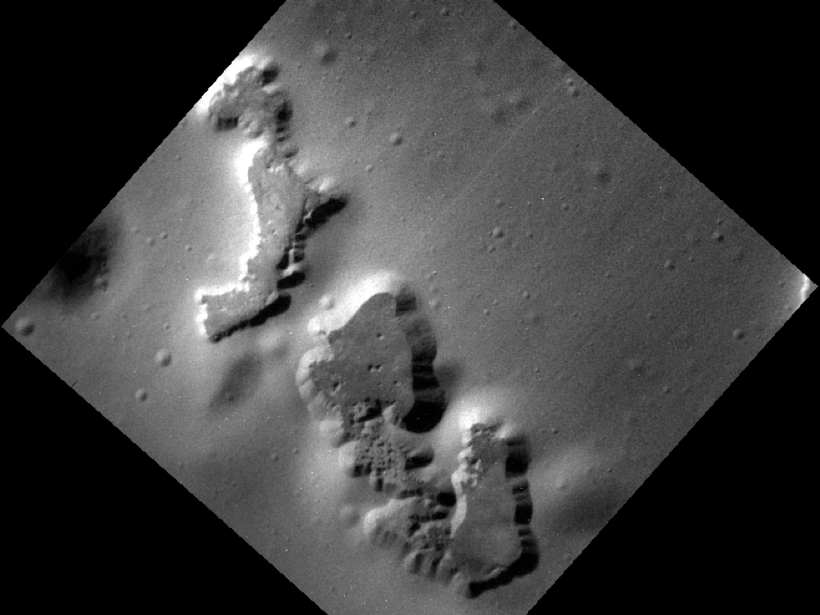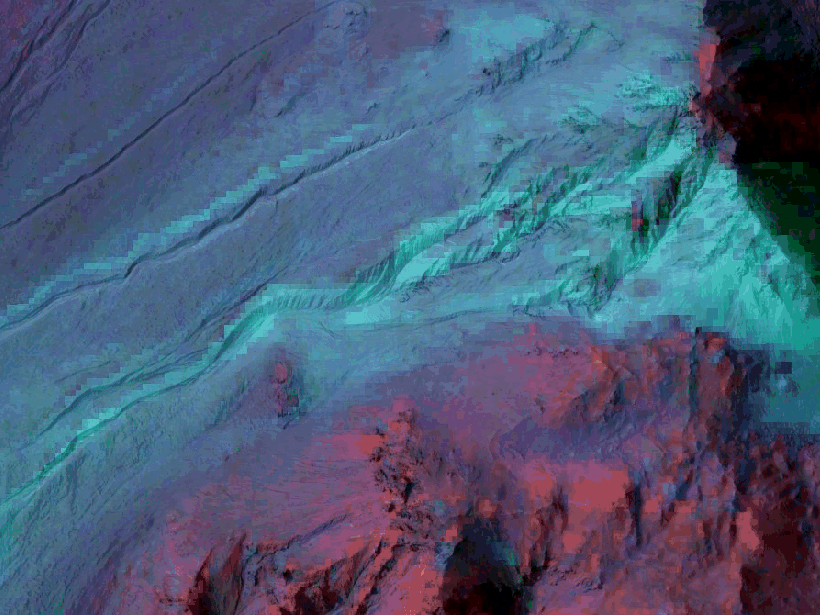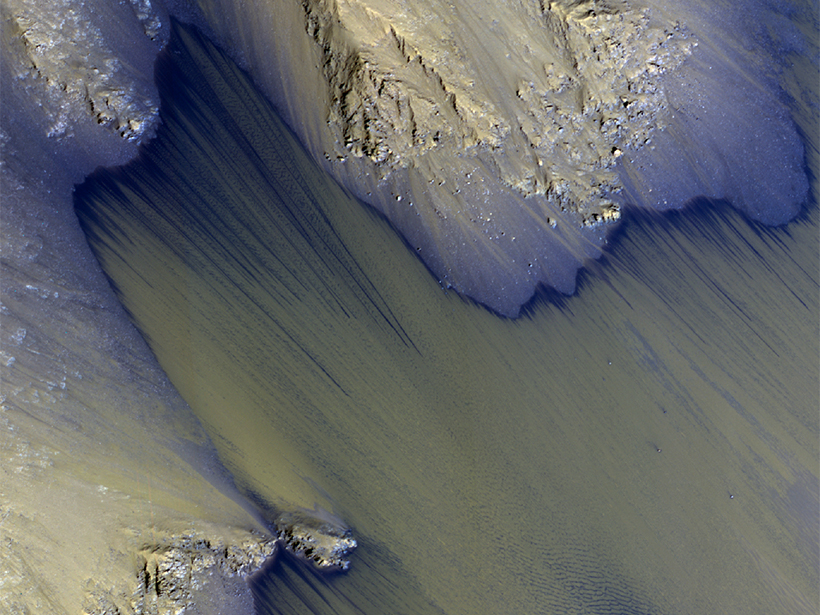NASA’s Curiosity rover explored the Kimberley region of Mars to search for signs that the planet was once habitable.
planetary surfaces
What to Expect from Cassini's Final Views of Titan
Cassini will fly close to Saturn's largest moon one last time. Here's a look back at what the spacecraft has revealed and ahead to scientists' final close glimpses of the moon.
Iapetus's Ridge: The Result of Many Small Impacts?
A ridge around Saturn's third-largest moon has scientists scratching their heads.
Seeking Signs of Life and More: NASA’s Mars 2020 Mission
The next Mars rover will be able to land near rugged terrain, giving scientists access to diverse landscapes. It will also cache core samples, a first step in the quest to return samples to Earth.
Unprecedented Views of Mercury Constrain Hollow Formation
The consistently shallow depths of the depressions scattered across Mercury's surface suggest their morphology is not determined by the thickness of a volatile-rich outer layer.
Pluto Observers Find Possible Clouds, Remarkably Bright Surface
Smudges on images could be clouds that form at dawn and dusk, scientists report, and measurements of high reflectivity of Pluto’s “heart” add new evidence of a geologically young surface.
Paola Receives 2016 G. K. Gilbert Award
Christopher Paola will receive the 2016 G. K. Gilbert Award at the 2016 American Geophysical Union Fall Meeting, to be held 12–16 December in San Francisco, Calif. The award recognizes "a scientist who has either made a single significant advance or sustained significant contributions to the field of Earth and planetary surface processes, and who has in addition promoted an environment of unselfish cooperation in research and the inclusion of young scientists into the field."
Mars’s Climate May Have Been Wet Much Later Than Thought
Water-carved valleys may be relatively young, challenging assumptions about the history of the Red Planet's climate.
How Do Gullies Form on Mars?
New orbiter data support an important role for seasonal frost—not liquid water—in the formation of Martian gullies.
A Cluster of Water Seeps on Mars?
The discovery of dense concentrations of recurring flowlike features in two Valles Marineris chasms could aid in the search for life and influence future exploration of the Red Planet.









